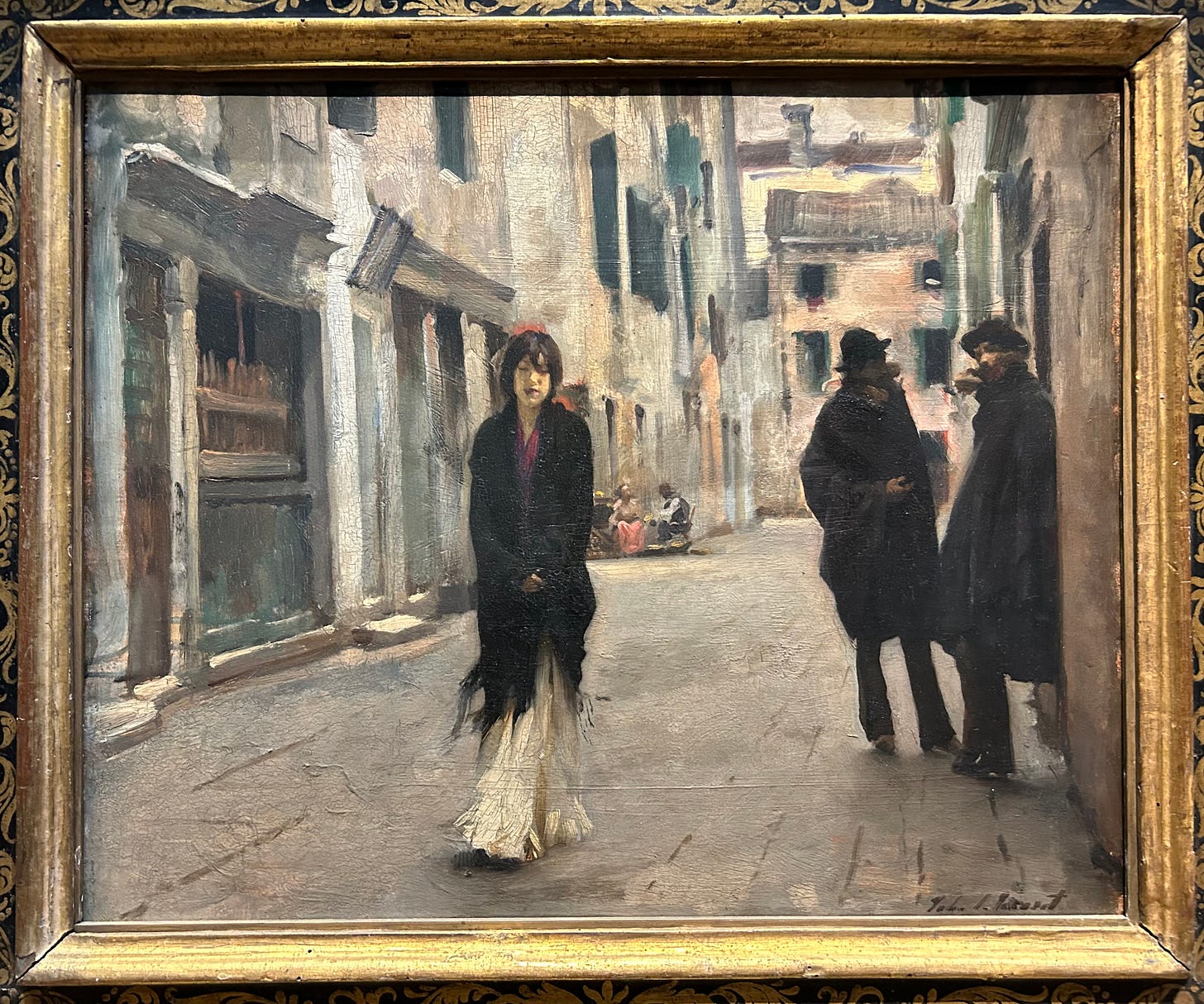I have written elsewhere about avoiding studiousness when visiting an art museum. Ideally, I think one should roam a museum in a kind of contemplative glide, an attentive meander that looks without the burden of having to “take it all in” or—worse—fixate on what the curators and crowds dictate.1 One of the most important disciplines for visiting a museum is a posture of availability that is open to surprise. Eschew the map and guide, wander expectantly, and let yourself be grabbed by an artwork you didn’t come looking for.
This kind of posture can make even a familiar collection, one you’ve visited many times, a field of almost infinite possibility. This is not only because there might be works you haven’t seen before; but rather, and more interestingly, because the you that visits again has not seen what you’ve seen in the past. What I mean is this: over time, even if it never changed, every museum collection is nonetheless dynamic because we always bring new eyes. The I who is looking has lived through more, has suffered, has been humbled, has made new friends, and so this looking-I carries new possibilities of reception. Even if Jamie has visited this gallery a dozen times before, this Jamie, bearing this new constellations of hopes and hungers and hurts, is visiting for the first time. (It will not surprise you that this is a theme I explore in my book, How to Inhabit Time.2)
The unique joy of this dynamism is the experience of being hooked by something you’ve never noticed before. This was my experience on a recent visit to the National Gallery of Art in DC. Having learned that my beloved El Grecos were not on view, I was somewhat surprised to find myself absorbed by American painters. One in particular stopped me in my tracks: John Singer Sargent’s Street in Venice (1882).
What pulled me in? It is not large—only about 2 feet tall. But there is an obvious power of contrasts: those dark slices of black amid brighter light and tantalizing turquoise and hints of teal, as if the lagoon was reflecting into this back alley. The strokes, if you get close, are remarkably bold and confident and relatively few. What Sargent captures is as much a mood as a scene.
I linger with the painting. Ruminate. Wonder. The woman at the center is so deftly evoked and yet her very being is underdetermined. Her face—achieved with a remarkable economy of detail—is at once profoundly human and yet hard to read. Is she downcast or coy? Is she ashamed or shy? Is she draped in black because she is in mourning? Or has she wrapped herself in a blanket to make her way home after a long night of dancing? The black of her shawl is so different from the black of the men behind her. Theirs is the darkness of shadow. And here, too, is ambiguity. The man against the wall is looking at the woman. We can see this clearly even though, if you lean in, you’ll see that his visage is an assemblage of dobs and dots. Is he is puzzled and intrigued as we are? Or is there something lecherous in this gaze? Or is there a flash of recognition? Of allure? His companion seems to not even notice, as if there dyadic conversation is its own enclosed world. But the woman draped in black is in the light, an incursion, an epiphany that can’t be ignored.
Sargent’s composition bends our attention: the way the canvas is carved into thirds; the architectural lines of perspective that draw our gaze inward; the way the three figures are aligned and yet occupy different depths of the painting; and, of course, the light.
I don’t know “what’s going on” in this painting, and I’m not even sure I want to know. I want to step into its light and inhabit its ambiguity. I don’t need to master this. I only want to spent a little longer with it. And my world is richer again, because here’s another work of art I’ve fallen in love with.
I also have thoughts about how to visit a used bookstore, especially if you feel the tick-tick-ticking clock (timebomb?) of a spouse waiting for you to be done but you’re hoping to cover as much as possible so you can make your divine appointment with that one buried treasure in the haphazard shelves. Here’s the tip: Trust your peripheral vision and your unconscious recognition. Skim the spines at a steady pace, trusting that the title, even its font, will grab you when you finally encounter the gem you didn’t know you needed.
See chapter 5. Bonus: it includes a discussion re: Bruce Springsteen.




